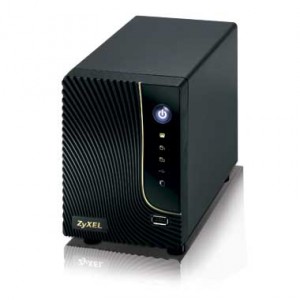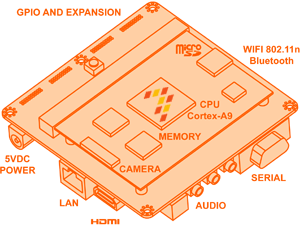I’m in the midst of finding a low-cost embedded linux platform to standardize on for IoT/network device experiments. I’ve been using Debian on Marvel Kirkwood ARM devices as inexpensive, low power servers and network appliances for a number of years now. I’ve also used OpenWRT for my home network and other network appliances.
A few years ago though, I grew tired with the difficulty of maintaining/upgrading Debian on my ARM devices and replaced them with a small AMD based x86 box for my main home server. There have still been upgrade hassles, but overall, I think it reduced the fussyness and frustration enough to be worthwhile.
At about the same time, I started growing interested in using OpenWRT more widely, and I was encouraged when the LEDE Project forked off for reasons that included a desire to fix some of the things that frustrated me about OpenWRT. I liked the simplicity vs a full linux distribution. And the minimal system requirements meant OpenWRT could run on small, inexpensive, relatively low-power devices. Last year, I started work on trying to get OpenWRT running on some cheap linux-based network music servers. Before going further, I paused to think about what’s really important.
I realized that, for my purposes the fact that OpenWRT/LEDE runs on a wide variety of compact, inexpensive devices was as much a liability as an asset. It meant more of the communities effort was invested in supporting the hardware, which meant that a lot of the supported hardware and some of the higher-level software wasn’t well supported, or supported at all. Furthermore, the constrained resources on the various hardware made it harder to compile, package, and deploy software packages that were well supported on full linux distributions. These tradeoffs between cost and ease of development/deployment might be acceptable if I was working on a high-volume device, but I’m not. I’m working on one-offs for my own projects. At most, I might make/deploy a dozen similar devices. How much hassle was I inflicting on myself in exchange for saving $20, or $200 vs an easier to use alternative?
As for the alternative, figuring that out is really the point of this post. As I see it, there are three major options.
- RaspberryPi
- Chinese ARM (Allwinner, Rockchip, Amlogic, etc)
- NextThing
And my current impressions on each option:
RaspberryPi
Anyone who has read this far is probably well aware of the success of the RaspberryPi and its offspring, like the RPi Zero and RaspberryPi v3. Community support is surely the strongest out of any of the inexpensive ARM boards. Unfortunately, I don’t find the boards a great fit for most of my projects.
The Raspberry Pi v3 is quite capable in terms of processing and video. Of those the processing power is probably the most relevant to me, but the projects that call for that also call for better network and disk IO, rather than the shared USB2 on the v3. Also, at $35-40 it’s more expensive than I’d like. It’s a bit on the large size too, and power consumption can be a bit high.
The RPi Zero is cheap ~$5 but availability has been poor, and it still seems hard to get. It’s small, and power consumption is better than the v3. Unfortunately, the Zero seems targeted at people who want to do more hardware hacking than I do. IO is minimal. There is no network, and no included support for USB peripherals (it can be a USB peripheral though).
It’s been almost a year since these two devices were released, so there is a good chance we’ll be seeing upgrades soon. Still, I’m not holding my breath.
Chinese ARM Boards ( with SoCs from Allwinner, Rockchip, etc ).
If I remember right, ARM SoCs from Allwinner and Rockchip first appeared at about the same time as the first RaspberryPi, in android TV boxes and sticks. The first developer board I remember was the Allwinner-based Cubieboard. Since then, there have been many variants from a half-dozen board designers like FriendlyARM, (SinoVOIP) Bannana Pi, (Xunlong) Orange Pi.
Unfortunately Allwinner, and most/all of the other SoC makers aren’t great about providing documentation or source code for their linux variants, and the board makers don’t/can’t exert much leverage. Allwinner chips seem to have a decent community around them, but there are so many SoC variants and board variants that a lot of effort is burned trying to keep up with them. The linux-sunixi (Allwinner) community is making a concerted effort at getting support into the mainline linux kernel, which should both make ongoing support easier and broaden the base of potential contributors.
- H3/H2+ Quad Cortex-A7
- Orange Pi Zero ~$9 (+$3.50 shipping) USB, 2.4GHz 802.11n WiFi, 10/100 Ethernet.
- Orange Pi One $10 (+$3.50 shipping) USB, 10/100 Ethernet, HDMI
- FriendlyARM NanoPi M1 $12.99 USB, 10/100 Ethernet, HDMI
- FriendlyARM NanoPi NEO $7.99 USB, 10/100 Ethernet
- FriendlyARM NanoPi NEO Air $17.99 USB, 2.4GHz 802.11n WiFi, Bluetooth
Next Thing C.H.I.P.
Next Thing grabbed a lot of attention in late 2015 for their promise of a $9 computer called the C.H.I.P. After some challenges, they delivered on their Kickstarter and went on to produce more of the boards, as well as the PocketCHIP and upcoming CHIP Pro.
The C.H.I.P. includes 4GB of fast onboard flash, 2.4GHz 802.11n WiFi, Bluetooth 4.0, 512MB RAM and multi-format video out (built-in composite, or VGA & HDMI with adapters).
NextThing used yet another Allwinner ARM SoC (R8), and by that criteria, belong in the previous category. What sets them apart from other people spinning boards with cheap ARM SoCs is that they have invested time and money into software and documentation — including a full datasheet for the GR8 (R8 + 256MG RAM in package) used on their C.H.I.P. Pro.
They are currently out of stock on the CHIP and all they can say about backorders is that they are expected to ship in Q1 2017.
Conclusions
I already have an RPi v3, which I’ll find some semi-permenant use for. the C.H.I.P. is attractive because of it’s manufacturer support, despite being out of stock, and having an older Cortex-A8 CPU core. I’m not in a huge hurry, so I think I’ll order a couple now and hope they arrive before I wish they were here sooner.
I’m also tempted to buy an Orange Pi Zero, or one of the FriendlyARM NanoPi variants, for comparison.


